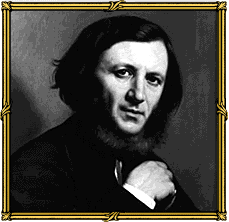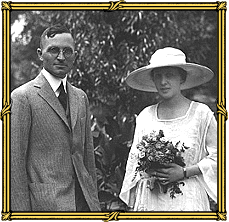
Introduction
The story of early Britain has traditionally been told in terms of waves of invaders displacing or annihilating their predecessors. Archaeology suggests that this picture is fundamentally wrong. For over 10,000 years people have been moving into - and out of - Britain, sometimes in substantial numbers, yet there has always been a basic continuity of population.
'Before Roman times, 'Britain' was just a geographical entity and had no political meaning and no single cultural identity.'
The gene pool of the island has changed, but more slowly and far less completely than implied by the old 'invasion model', and the notion of large-scale migrations, once the key explanation for change in early Britain, has been widely discredited.
Substantial genetic continuity of population does not preclude profound shifts in culture and identity. It is actually quite common to observe important cultural change, including adoption of wholly new identities, with little or no biological change to a population. Millions of people since Roman times have thought of themselves as 'British', for example, yet this identity was only created in 1707 with the Union of England, Wales and Scotland.
Before Roman times 'Britain' was just a geographical entity, and had no political meaning, and no single cultural identity. Arguably this remained generally true until the 17th century, when James I of England sought to establish a pan-British monarchy.
Throughout recorded history the island has consisted of multiple cultural groups and identities. Many of these groupings looked outwards, across the seas, for their closest connections - they did not necessarily connect naturally with their fellow islanders, many of whom were harder to reach than maritime neighbours in Ireland or continental Europe.
It therefore makes no sense to look at Britain in isolation; we have to consider it with Ireland as part of the wider 'Atlantic Archipelago', nearer to continental Europe and, like Scandinavia, part of the North Sea world.First peoples
The first 'Britons' were an ethnically mixed group From the arrival of the first modern humans - who were hunter-gatherers, following the retreating ice of the Ice Age northwards - to the beginning of recorded history is a period of about 100 centuries, or 400 generations. This is a vast time span, and we know very little about what went on through those years; it is hard even to fully answer the question, 'Who were the early peoples of Britain?', because they have left no accounts of themselves.
'Throughout prehistory there were myriad small-scale societies and many petty 'tribal' identities...'
We can, however, say that biologically they were part of the Caucasoid population of Europe. The regional physical stereotypes familiar to us today, a pattern widely thought to result from the post-Roman Anglo-Saxon and Viking invasions - red-headed people in Scotland, small, dark-haired folk in Wales and lanky blondes in southern England - already existed in Roman times. Insofar as they represent reality, they perhaps attest the post-Ice Age peopling of Britain, or the first farmers of 6,000 years ago.
From an early stage, the constraints and opportunities of the varied environments of the islands of Britain encouraged a great regional diversity of culture. Throughout prehistory there were myriad small-scale societies, and many petty 'tribal' identities, typically lasting perhaps no more than a few generations before splitting, merging or becoming obliterated. These groups were in contact and conflict with their neighbours, and sometimes with more distant groups - the appearance of exotic imported objects attest exchanges, alliance and kinship links, and warsBefore Rome: the 'Celts'
The defeated Iron Age tribes of Britain At the end of the Iron Age (roughly the last 700 years BC), we get our first eye-witness accounts of Britain from Greco-Roman authors, not least Julius Caesar who invaded in 55 and 54 BC. These reveal a mosaic of named peoples (Trinovantes, Silures, Cornovii, Selgovae, etc), but there is little sign such groups had any sense of collective identity any more than the islanders of AD 1000 all considered themselves 'Britons'.
'Calling the British Iron Age 'Celtic' is so misleading that it is best abandoned.'
However, there is one thing that the Romans, modern archaeologists and the Iron Age islanders themselves would all agree on: they were not Celts. This was an invention of the 18th century; the name was not used earlier. The idea came from the discovery around 1700 that the non-English island tongues relate to that of the ancient continental Gauls, who really were called Celts. This ancient continental ethnic label was applied to the wider family of languages. But 'Celtic' was soon extended to describe insular monuments, art, culture and peoples, ancient and modern: island 'Celtic' identity was born, like Britishness, in the 18th century.
However, language does not determine ethnicity (that would make the modern islanders 'Germans', since they mostly speak English, classified as a Germanic tongue). And anyway, no one knows how or when the languages that we choose to call 'Celtic', arrived in the archipelago - they were already long established and had diversified into several tongues, when our evidence begins. Certainly, there is no reason to link the coming of 'Celtic' language with any great 'Celtic invasions' from Europe during the Iron Age, because there is no hard evidence to suggest there were any.
Archaeologists widely agree on two things about the British Iron Age: its many regional cultures grew out of the preceding local Bronze Age, and did not derive from waves of continental 'Celtic' invaders. And secondly, calling the British Iron Age 'Celtic' is so misleading that it is best abandoned. Of course, there are important cultural similarities and connections between Britain, Ireland and continental Europe, reflecting intimate contacts and undoubtedly the movement of some people, but the same could be said for many other periods of history.
The things we have labelled 'Celtic' icons - such as hill-forts and art, weapons and jewellery - were more about aristocratic, political, military and religious connections than common ethnicity. (Compare the later cases of medieval Catholic Christianity or European Renaissance culture, or indeed the Hellenistic Greek Mediterranean and the Roman world - all show similar patterns of cultural sharing and emulation among the powerful, across ethnic boundaries.)Britain and the Romans
Almost everyone in Britannia was legally and culturally 'Roman' The Roman conquest, which started in AD 43, illustrates the profound cultural and political impact that small numbers of people can have in some circumstances, for the Romans did not colonise the islands of Britain to any significant degree. To a population of around three million, their army, administration and carpet-baggers added only a few per cent.
'The future Scotland remained beyond Roman government, although the nearby presence of the empire had major effects.'
The province's towns and villas were overwhelmingly built by indigenous people - again the wealthy - adopting the new international culture of power. Greco-Roman civilisation displaced the 'Celtic' culture of Iron Age Europe. These islanders actually became Romans, both culturally and legally (the Roman citizenship was more a political status than an ethnic identity). By AD 300, almost everyone in 'Britannia' was Roman, legally and culturally, even though of indigenous descent and still mostly speaking 'Celtic' dialects. Roman rule saw profound cultural change, but emphatically without any mass migration.
However, Rome only ever conquered half the island. The future Scotland remained beyond Roman government, although the nearby presence of the empire had major effects. The kingdom of the Picts appeared during the third century AD, the first of a series of statelets which, during the last years and collapse of Roman power, developed through the merging of the 'tribes' of earlier times.The 'Dark Ages'
Were the 'Celts' displaced or absorbed by the invaders? In western and northern Britain, around the western seas, the end of Roman power saw the reassertion of ancient patterns, ie continuity of linguistic and cultural trends reaching back to before the Iron Age. Yet in the long term, the continuous development of a shifting mosaic of societies gradually tended (as elsewhere in Europe) towards larger states. Thus, for example, the far north-western, Irish-ruled kingdom of Dalriada merged in the ninth century with the Pictish kingdom to form Scotland.
'It was once believed that the Romano-British were slaughtered or driven west by hordes of invading Anglo-Saxons, part of the great westward movement of 'barbarians' overwhelming the western empire.'
The western-most parts of the old province, where Roman ways had not displaced traditional culture, also partook of these trends, creating small kingdoms which would develop, under pressure from the Saxons, into the Welsh and Cornish regions.
The fate of the rest of the Roman province was very different: after imperial power collapsed c.410 AD Romanised civilisation swiftly vanished. By the sixth century, most of Britannia was taken over by 'Germanic' kingdoms. There was apparently complete discontinuity between Roman Britain and Anglo-Saxon England; it was once believed that the Romano-British were slaughtered or driven west by hordes of invConclusion
Britain has always absorbed invaders and been home to multiple peoples How many settlers actually crossed the North Sea to Britain is disputed, although it is clear that they eventually mixed with substantial surviving indigenous populations which, in many areas, apparently formed the majority.
As with the adoption of 'Celtic' cultural traits in the Iron Age, and then Greco-Roman civilisation, so the development of Anglo-Saxon England marks the adoption of a new politically ascendant culture; that of the 'Germanic barbarians'.
'Contrary to the traditional idea that Britain originally possessed a 'Celtic' uniformity which first Roman, then Saxon and other invaders disrupted, in reality Britain has always been home to multiple peoples...'
Perhaps the switch was more profound than the preceding cases, since the proportion of incomers was probably higher than in Iron Age or Roman times, and, crucially, Romano-British power structures and culture seem to have undergone catastrophic collapse - through isolation from Rome and the support of the imperial armies - some time before there was a substantial presence of 'Anglo-Saxons'.
In contrast to Gaul, where the Franks merged with an intact Gallo-Roman society to create Latin-based French culture, the new Anglo-Saxon kingdoms in Britain, although melded from indigenous and immigrant populations, represented no such cultural continuity; they drew their cultural inspiration, and their dominant language, almost entirely from across the North Sea. Mixed natives and immigrants became the English.
Contrary to the traditional idea that Britain originally possessed a 'Celtic' uniformity, which first Roman, then Saxon and other invaders disrupted, in reality Britain has always been home to multiple peoples. While its population has shown strong biological continuity over millennia, the identities the islanders have chosen to adopt have undergone some remarkable changes. Many of these have been due to contacts and conflicts across the seas, not least as the result of episodic, but often very modest, arrivals of newcomers.ading Anglo-Saxons, part of the great westward movement of 'barbarians' overwhelming the western empire. However, there was no such simple displacement of 'Celts' by 'Germans'.














